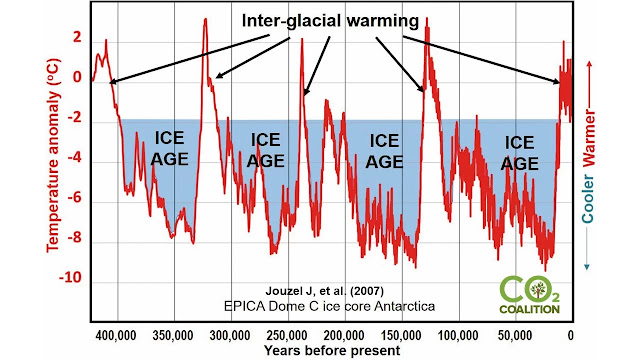Responding to the CO2 Coalition's "Fact #14" on Glacial Cycles

CO2 Coalition's " Fact #14 " appears to be pretty trivial, and as best I can tell, it exists here to scare people into being afraid of a coming ice age. Over the last million years (since the Mid-Pleistocene Transition), glacial cycles have been about 100K years long, synced with orbital cycles. For most of each glacial cycle, the Earth is in a glacial period, with continental ice sheets extending into mid-latitudes, but for about 10K-15K years, the Earth experiences an "interglacial" period, when global temperatures increase and continental ice sheets retreat. Our current interglacial, the Holocene, has lasted about 11,700 years, and the major ice sheets are restricted to Greenland and Antarctica. None of this is particularly controversial or relevant to whether AGW is causing harm to human civilization. Now technically, the above graph shows the last 420K years of the current ice age. There are not multiple ice ages in the Quaternary. Even the interglacial per...

